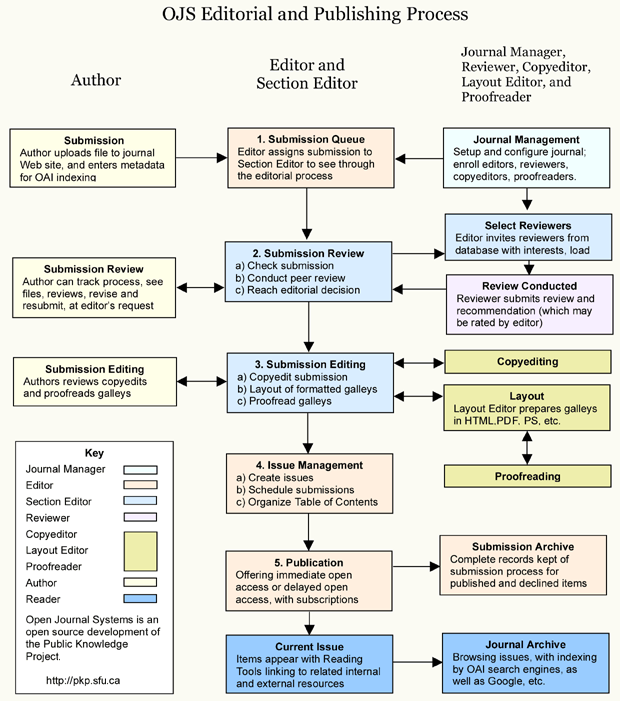Editorial Polices
In a line with COPE (Committee on Publication Ethics) guidelines for participation of editorial boards and related ethical practices, Animal Reports journal work to a sure highest standard of publishing Ethics.
|
Ethical considerations for participation on editorial boards |
|
Roles and responsibilities of editorial board members |
Animal Reports Journal define the roles and responsibilities of their editors-in-chief and all members of the editorial board. New editors, at every level of board involvement has clearly defined roles and expectations (Guidelines is Available).
|
Participation in multiple boards |
To mitigate conflicts of interest of participating in the editorial boards of multiple journals, Animal Reports discourage editors from serving on the editorial boards of competing journals (those with overlapping aims, scope, or target audiences) unless an explicit exemption is granted by the Editor-in-Chief. Current editors must disclose all editorial affiliations, and any undisclosed or unresolved conflicts may result in removal from the board. This policy is publicly available in our Editorial Guidelines.
|
Declarations of interests |
The editorial board members should disclose any potential conflicts of interest. The list should include their submitted papers to Animal Reports and the other commitments and roles involving journals, books, and societies that produce publications (eg, membership of publication oversight committees). This could prevent any bias of publication decision and process.
Editorial structure and publishing process flow.

|
Editorial board structure and responsibilities |
|
General editorial board members roles |
Editorial Board Members are responsible for making decisions on manuscripts in their field of expertise; they can also edit Special Issues and may be invited to review manuscripts. The initial term for this position is two years, and it entails the following roles:
Pre-screen and make decisions on new submissions related to their research interests.
Provide input or feedback regarding journal policies.
Help to promote the journal among their peers or at conferences.
Attend Board Meetings to suggest journal development strategies.
Review manuscripts.
|
Editor-in-Chief |
The Editor-in-Chief is a champion of the journal and a leader in its discipline. The Editor-in-Chief supervises journal activities, with the aim of ensuring the success of the journal within the scientific community. The Editor-in-Chief is responsible for ensuring the scientific quality and development of the journal. The Editor-in-Chief is expected to maintain a connection with the Editorial Board and assist the Editorial Office in the management of the journal. The initial term for this position is two years, and it entails the following roles:
Representing the journal globally to enhance its visibility and prestige.
Making scientific decisions about the journal's aim and scope, and polices.
Enhancing the indexing and ranking of the journal in different data bases and scientific aggregators.
Inviting distinguished scientists to join the Editorial Board.
Suggesting topics for Special Issues.
Providing support and guidance to Editorial Board Members and Staff when required.
Approving manuscripts for publication after peer review and revisions
Enforcing ethical standards and ensuring adherence to peer review best practices.
Leading the annual Editorial Board meeting to align strategic priorities.
|
Managing editor |
The managing editor is the general coordinator of the journal and a leader in its discipline. The managing editor supervises journal activities, with the aim of ensuring the success of the journal within the scientific community and ensuring the scientific quality and development of the journal. This position entails the following roles:
Representing the journal globally to enhance its visibility and prestige.
Assist the Editor-in-Chief in efforts at enhancing the indexing and ranking of the journal in different data bases and scientific aggregators.
Communicates and co-ordinate with the journal publisher, Editorial board, Assistant team, reviewers, authors and research bodies.
Making scientific decisions about the journal's aim and scope, and polices.
Inviting distinguished scientists to join the Editorial Board.
Suggesting topics for Special Issues.
Receiving new submissions from authors, conducts plagiarism checks and assign section editors, and manage the publishing process.
Providing support and guidance to Editorial Board Members and Staff when required.
Approving manuscripts for publication after peer review and revisions.
Enforcing ethical standards and ensuring adherence to peer review best practices.
Ensuring timeliness of reviews and publication of articles.
Alternate Editor-in-Chief to lead the annual Editorial Board meeting in aligning strategic priorities if the Editor-in-Chief is unavailable.
|
Section Editors |
Section Editors are leaders in their particular field and are responsible for ensuring the scientific quality of a particular Section of the journal. The Section Editors is expected to oversee the growth and development of the journal Sections and their Board Members. This position entails the following roles:
Representing the journal globally to enhance its visibility and prestige.
Making scientific decisions about the scope of their Section.
Inviting distinguished scientists to join the Editorial Board.
Suggesting topics for Special Issues.
Providing support and guidance to Editorial Board Members and Editorial Staff when required.
Understanding, leading and upholding peer review guidelines and ethics guidelines.
Approving manuscripts for publication after peer review and revisions
Enforcing ethical standards and ensuring adherence to peer review best practices.
Attend Board Meetings to suggest journal development strategies.
|
Associate Editors |
Associate Editors support the Editor-in-Chief and Section Editors, if assigned to a particular Section, in ensuring the growth and development of the Section and the journal. The Associate Editor is expected to make decisions on behalf of the Editor-in-Chief or Section Editors when they are unavailable. This position entails the following roles:
Advising on the strategic development of the journal.
Advising the Editor-in-Chief and Section Editor-in-Chief on the aims and scope of the journal or Section.
Representing the journal globally to enhance its visibility and prestige.
Providing support and guidance to Editorial Board Members and Editorial Staff when required.
Suggesting themes for Special Issues and assisting with inviting/proposing Guest Editors to lead them.
Inviting distinguished scientists to join the Editorial Board.
Understanding, leading and upholding peer review guidelines and ethics guidelines.
Approving manuscripts for publication after peer review and revisions
Enforcing ethical standards and ensuring adherence to peer review best practices.
Attend Board Meetings to suggest journal development strategies.
|
Editorial Advisory Board |
Advisory Board Members provide guidance to the Editor-in-Chief regarding journal development strategies and policies. This position entails the following roles:
Pre-screen and make decisions on new submissions, especially in cases of conflicts of interest.
Suggest topics for Special Issues and launch new Sections for the journal.
Provide input or feedback regarding journal policies.
Help to promote the journal among their peers or at conferences.
Attend Board Meetings to suggest journal development strategies.
Provide assistance to solve appeal cases or ethical disputes.
|
Copy Editors |
Proofread content and correct spelling, punctuation, and grammatical errors.
Assess and make recommendations on readability, style, and congruence with editorial policy.
Format submissions to journal requirements.
Allocate space for text, tables, figures, photos and illustrations that make the article.
Arrange page layouts of articles.






